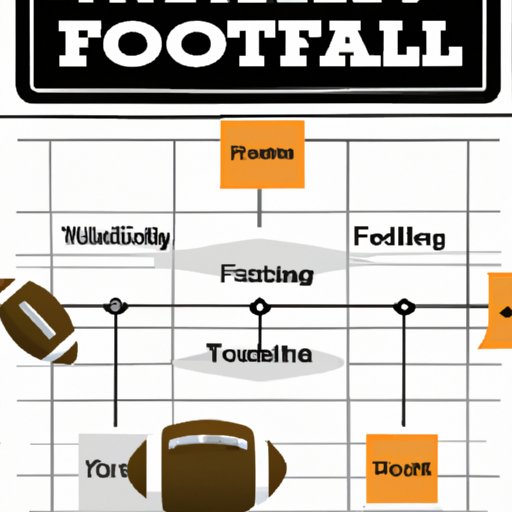Introduction
Fantasy football has become increasingly popular over the last few decades. According to the Fantasy Sports Trade Association, more than 59 million people in the United States and Canada play fantasy sports. Fantasy football is an exciting way to follow the sport, as it allows you to create your own team and compete against other players. If you’re interested in starting a fantasy football league, there are some key steps you need to take to ensure that the league is successful.
Overview of Fantasy Football
Fantasy football is a game in which participants assemble their own virtual teams from the current players in a professional football league. Each team competes against other teams in a league, with points awarded based on how each player performs in actual games. At the end of the season, the team with the most points wins the league championship.

Benefits of Joining a Fantasy Football League
There are many benefits to joining a fantasy football league. For starters, it’s a great way to stay connected with friends who may live far away. It also gives you a chance to learn more about the sport, as you’ll have to research player stats and make decisions about who to draft for your team. Plus, it’s just plain fun! You can get competitive with your friends and show off your knowledge of the game.
Setting Up a League
Once you’ve decided to start a fantasy football league, there are several steps you need to take to get it up and running. First, you’ll need to decide what type of league you want to run. The two most common types of leagues are head-to-head leagues and total points leagues. In a head-to-head league, teams compete against each other each week and the winner of the matchup is determined by the total points scored. In a total points league, teams compete against each other throughout the season and the team with the most points at the end of the season wins.
Next, you’ll need to select the teams for your league. Most leagues consist of anywhere from six to 12 teams. You’ll also need to decide on the rules for the league, such as the scoring system, waiver wire rules, and trade rules. Once you’ve selected the teams and set up the rules, you’ll need to set up a schedule for the season. This will include when the drafts will be held, when trades can be made, and when the playoffs will begin.
Managing a Successful Fantasy Football League
Once the league is set up, it’s important to make sure that it runs smoothly. A good way to do this is to establish some strategies for managing the league. First, make sure that everyone in the league is aware of the rules and the schedule. You should also make sure that everyone is following the same scoring system so that no one has an unfair advantage. Additionally, it’s important to make sure that all trades and waiver wire moves are fair and equitable.
Another key element of managing a successful fantasy football league is communication. Make sure that everyone in the league is communicating regularly to discuss trades, waiver wire moves, and any other issues that come up. You should also keep track of everyone’s scores and standings throughout the season. Finally, make sure that everyone is having fun. After all, the goal of fantasy football is to enjoy the game and have a good time.
One way to ensure that your league is successful is to look at examples of other successful leagues. The National Fantasy Football Championship (NFFC) is one of the premier fantasy football leagues in the world. The NFFC holds multiple drafts each year and offers a variety of different formats, including live drafts, online drafts, and auction drafts. They also offer different levels of competition, ranging from beginner to expert. By looking at the NFFC and other successful leagues, you can get ideas for how to structure your own league.
Conclusion
Starting a fantasy football league is a great way to stay connected with friends and have fun. To make sure your league is successful, it’s important to set up the league properly, manage the league effectively, and look to examples of successful leagues for inspiration. With these tips, you’ll be well on your way to starting a successful fantasy football league.
(Note: Is this article not meeting your expectations? Do you have knowledge or insights to share? Unlock new opportunities and expand your reach by joining our authors team. Click Registration to join us and share your expertise with our readers.)
